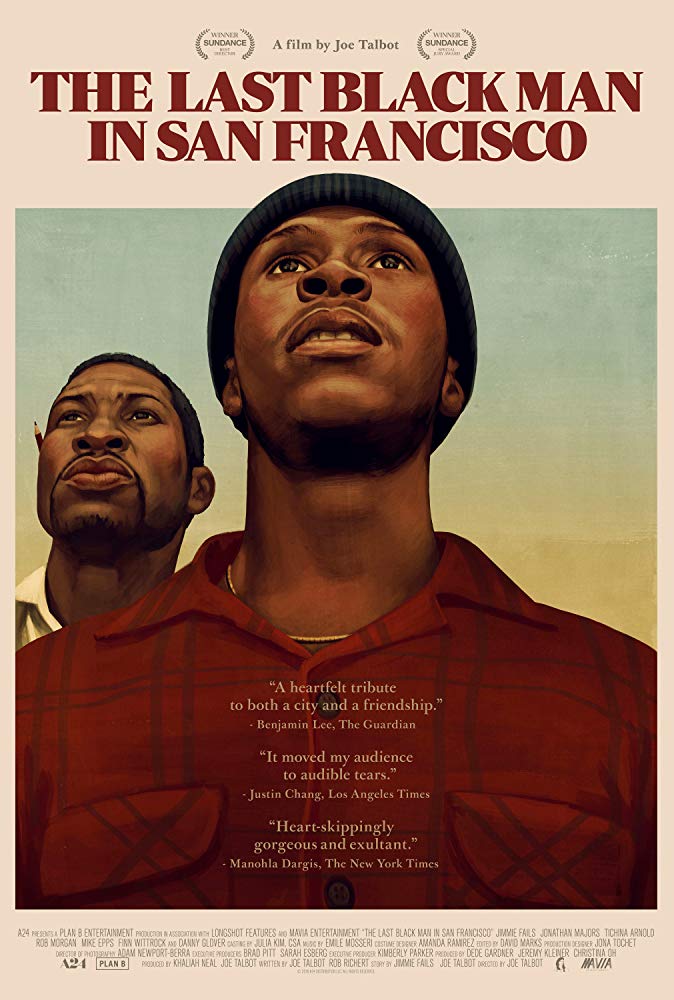Film Review: The Last Black Man in San Francisco (2019)



Refusing to be pigeonholed, nearly everything that happens in The Last Black Man in San Francisco defies expectations. Whether it be characters breaking free of expected tropes and archetypes to display emotion or actions uncommon in film, or its deep, honest, and heartfelt look at the titular city, Joe Talbot’s debut feature is as surprising as it is entertaining. In an industry packed with “feel good” and “topical” films, The Last Black Man in San Francisco manages both, but does so without schmaltzy sentimentality or surface-level characterizations. This is Art House at its finest.

Stylistically, The Last Black Man in San Francisco combines dreamy doses of French New Wave with the oddball sensibilities of Michael Gondry and the affectionate localization of Spike Lee, but never becomes a derivative of these influences. On a thematic level, nostalgia, a sense of home and family, race, violence, gentrification, and the ever-changing landscape of wealth disparity, culture, and poverty in American cities are all explored and dissected. It’s a film that has a lot to say, and it does so with an enormous amount of heart and intelligence.

At the heart of the semi-biographical story is Jimmie Fails (played by the real-life Fails, who also co-wrote the script) and his best friend, Montgomery (Johnathan Majors). Both are outcasts in their own ways but have found comfort in their shared love for art, writing, acting, skateboarding, and a certain house in a heavily gentrified neighborhood. Circumstances allow them to move temporarily out of the tiny apartment they share with Montgomery’s blind grandfather (Danny Glover), but their plan, like much in the film, is fleeting and doomed to failure.

While the evils and unfairness of gentrification are plain to see, The Last Black Man in San Francisco doesn’t focus the how or the why. Instead, it looks at a community and a family who have long ago adapted and resigned themselves to the inevitabilities of market speculation and white encroachment. They both love and hate the place they call home, and in recognizing this, feel both powerless and empowered by the economic structures built up around them and the pride they feel in themselves and their city for surviving it as well as they have. A line Jimmie says to a pair of trendy white yuppie types on a city bus near the end of the film sums things up nicely: “You don’t get to hate San Francisco. You don’t get to hate it unless you love it.”

With cameos by perennial San Francisco ambassador Jello Biafra and skateboarding legend Daewon Song, it’s clear that Talbot and Fails remain connected to their pasts in more ways than one. Their story is much more than the sum of its parts, and the artful way in which it’s filmed and presented creates an unforgettable and dreamlike – yet sharply frank – tribute to the city they love.
